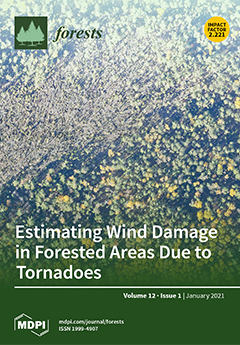The maternal environment of a tree species can influence the development and resistance of its offspring. Transgenerational induction of resistance is well known in plants but its occurrence in forest tree species has been less reported.
Quercus ilex L. (holm oak) is a widespread Mediterranean tree species threatened by the invasive
Phytophthora cinnamomi Rands pathogen. The influence of
P. cinnamomi on the offspring of infected
Q. ilex mother trees has not been studied. This study compared the performance and tolerance to
P. cinnamomi of seedlings from non-infected and
P. cinnamomi-infected trees. Acorns from
Q. ilex trees were collected from five forests. After isolations were conducted in the rhizosphere of several trees, in each forest, three trees were selected as non-infected and three were selected as
P. cinnamomi-infected. Forty acorns per tree were weighed and sown under greenhouse conditions, and when plants were aged ~9 months they were challenged with
P. cinnamomi. Plant mortality was higher in the offspring of non-infected trees than in the offspring of
P. cinnamomi-infected trees (26.2% vs. 21.1%, respectively). Consistently, survival probabilities of seedlings from
P. cinnamomi-infected trees were higher than those of seedlings from non-infected trees, particularly in seedlings with reduced growth. Although acorns from healthy
Q. ilex trees were heavier than acorns from
P. cinnamomi-infected trees, the time to death of inoculated seedlings was not influenced by seed weight. The time to death of seedlings was positively related to belowground mass, particularly to an increased proportion of fine secondary roots. We report transgenerational-induced resistance to
P. cinnamomi in
Q. ilex triggered by an unknown mechanism independent of acorn mass. Information about the persistence of transgenerational effects in
Q. ilex offspring and the influence of these effects on plant fitness is crucial to improve the management and regeneration of this declining species.
Full article





